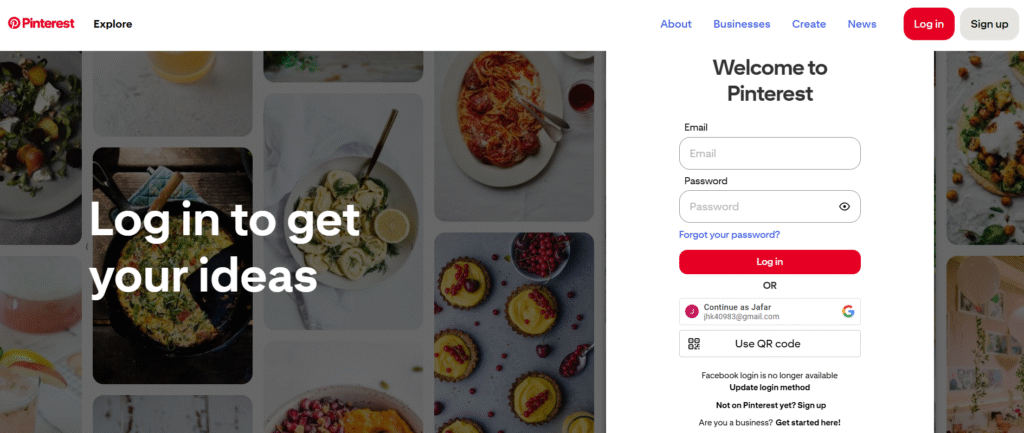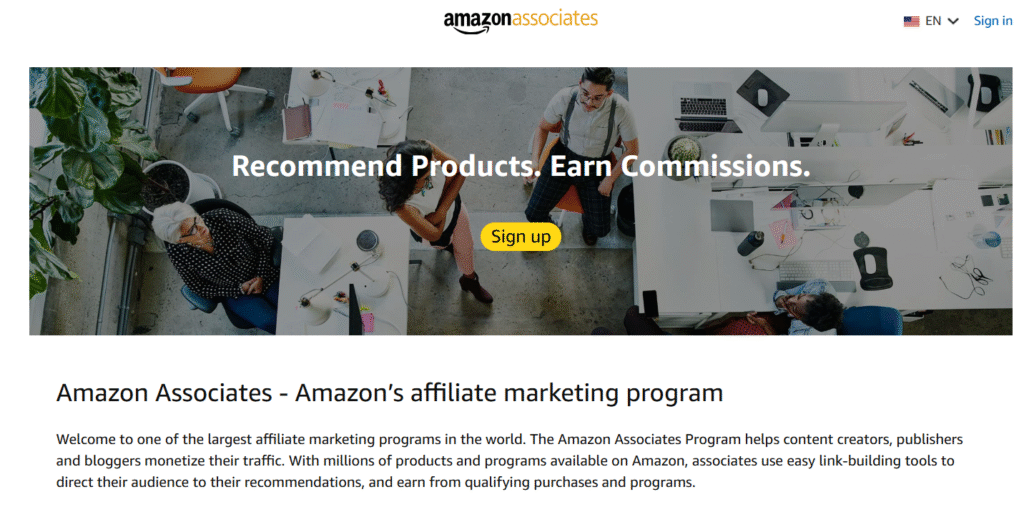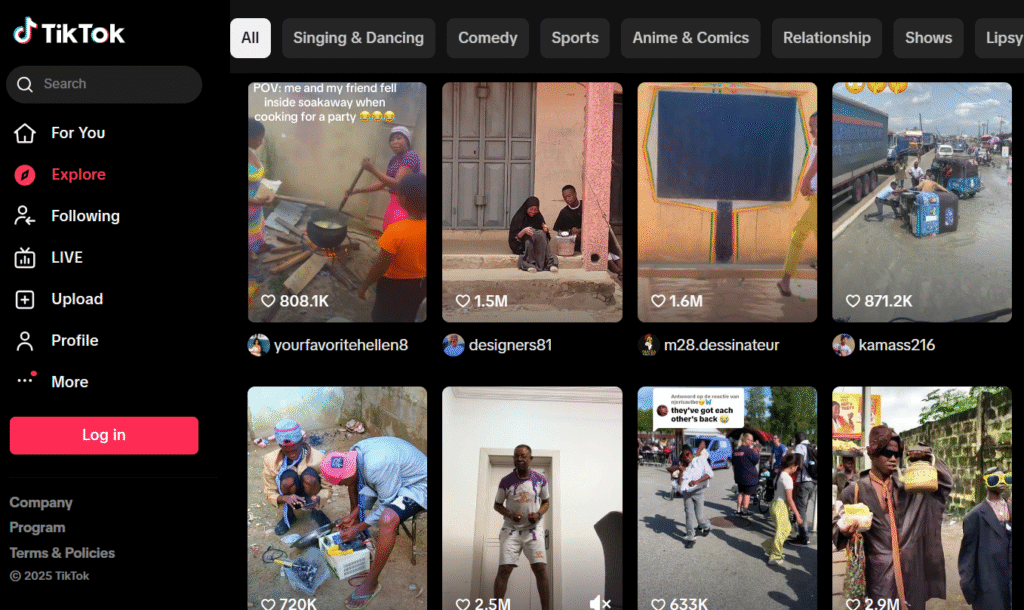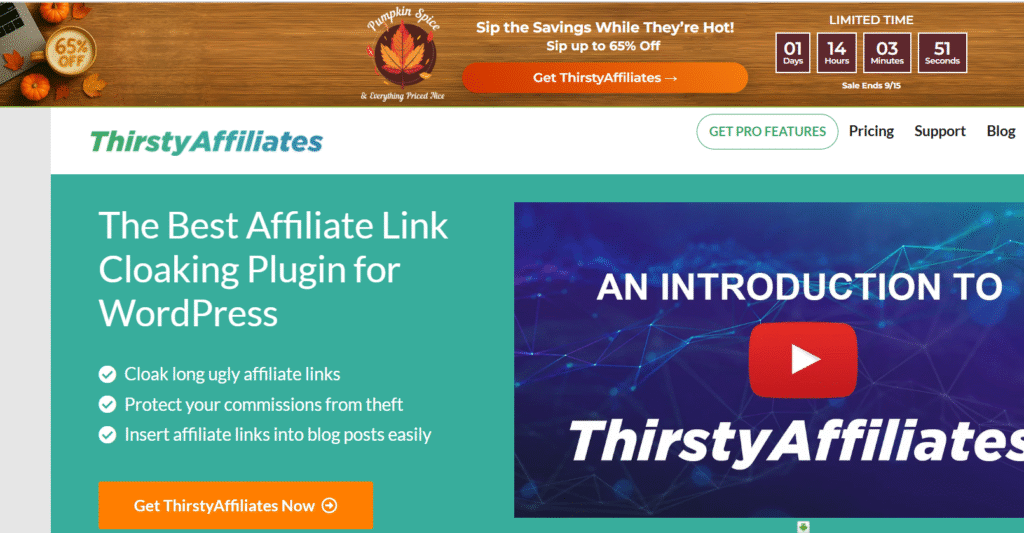How To Make Money With Affiliate Marketing

Hey there! Let me guess, you’ve been scrolling through social media and seeing all these people claiming they make thousands of dollars from their laptops, right?
Well, before you roll your eyes and think “another get-rich-quick scheme,” hear me out. Affiliate marketing is actually one of the most legitimate ways to build an online income, and I’m here to break it all down for you.
As someone who’s been in the financial industry for over a decade, I’ve seen countless money-making opportunities come and go. But affiliate marketing?
This one’s got some serious staying power. FYI, we’re talking about an industry that’s expected to reach $15.7 billion by 2024. Not too shabby for something you can start from your couch, right?
Let’s chat about how you can get your slice of this massive pie without any of the fluff or unrealistic promises you see everywhere else.
What Is Affiliate Marketing?
Think of affiliate marketing as being the world’s most chill salesperson. You don’t own the products, you don’t handle customer service, and you definitely don’t deal with shipping nightmares.
You simply recommend products you genuinely like and earn a commission when someone buys through your unique link. It’s basically digital word-of-mouth marketing with a paycheck attached.
Remember when your friend recommended that amazing coffee shop, and you went there because you trusted their taste? Same concept, except now you get paid for those recommendations.
Here’s what makes affiliate marketing brilliant: you can promote anything from $5 ebooks to $5,000 courses, and your earning potential scales with your audience and expertise. I’ve seen beginners make their first $100 within weeks and experienced marketers pulling in six-figure annual incomes.
How Does Affiliate Marketing Work?
The mechanics are surprisingly simple, which is probably why so many people underestimate its potential. You join an affiliate program, get your special tracking link, and share it with your audience. When someone clicks your link and makes a purchase, the company’s system tracks that sale back to you and, boom, you earn a commission.
The beauty is in the tracking technology. Every affiliate link contains a unique identifier that tells the merchant exactly who referred the customer. This isn’t some honour-system nonsense; it’s legitimate business with proper tracking and transparent reporting.
Most affiliate programs use cookies that last anywhere from 24 hours to 365 days. This means if someone clicks your link today but purchases next week, you still get credit for that sale. Pretty neat, right?
The commission structures vary wildly. Physical products on Amazon might pay 3-10%, while digital products and courses can pay 30-70% commissions. Some high-ticket items like software subscriptions can pay hundreds or even thousands per referral.
How Much Money Can You Make With Affiliate Marketing?
Ah, the million-dollar question! (Literally, for some people.) Let’s keep it real here, your earnings depend on several factors, and anyone promising you’ll make $10,000 in your first month is probably selling you something.
Beginner level (0-6 months): You might see anywhere from $0 to $1,000 per month as you learn the ropes and build your audience. Don’t get discouraged if your first few months are slow; this is totally normal.
Intermediate level (6-18 months): With consistent effort and smart strategies, many affiliate marketers reach $1,000 to $5,000 monthly. This is where things start getting exciting!
Advanced level (18+ months): The sky’s the limit here. I know marketers earning $10,000, $50,000, and even $100,000+ per month. But remember, these folks have put in serious work to get there.
From my financial background, I can tell you that treating affiliate marketing like a real business with proper tracking, reinvestment, and strategic planning is what separates the five-figure earners from the folks making pocket change.
How To Make Money With Affiliate Marketing
Ready to dive into the actual game plan? Here’s your step-by-step roadmap to affiliate marketing success. No shortcuts, no magic pills, just proven strategies that work.
Step 1: Choose A Niche
This is where most people mess up, so pay attention. Your niche isn’t just about what products you want to promote; it’s about solving specific problems for specific people.
Don’t just pick “fitness” because it’s popular. Instead, think “weight loss for busy moms” or “home gym equipment for small apartments.” The more specific you get, the easier it becomes to create content that resonates.
Here’s my finance-guy perspective: profitable niches have three characteristics:
- People actively spend money in that space
- There’s ongoing demand (not just trends)
- You can genuinely help people make better decisions
Some consistently profitable niches include personal finance, health and wellness, parenting, home improvement, and business tools. But honestly, if there’s a market for underwater basket weaving tutorials, there’s probably an affiliate opportunity there too 🙂
Step 2: Find A Good Content Platform

Your platform is your digital real estate, so choose wisely. You’ve got several solid options, each with its own pros and cons:
YouTube works incredibly well for product reviews and tutorials. The search longevity is fantastic; a good video can keep earning you money for years. Plus, people love seeing products in action before buying.
Blogs/Websites give you complete control and ownership. Google loves helpful, detailed content, and a well-optimized blog post can rank for years. This is my personal favourite for long-term wealth building.
Instagram is perfect for lifestyle and visual products. Stories and Reels are great for showing products in use, and the shopping features make purchasing super easy.
Pinterest is criminally underrated for affiliate marketing. It’s basically a visual search engine where people actively look for product recommendations.
TikTok is the new kid on the block, but incredibly powerful for reaching younger audiences. The viral potential can explode your reach overnight.
IMO, starting with two platforms maximum is the smartest approach. Master those before expanding elsewhere.
Step 3: Join A Legit Affiliate Program

This is where you’ll separate the wheat from the chaff. There are thousands of affiliate programs out there, but not all are created equal.
Amazon Associates is the beginner-friendly giant. Low commissions (1-10%) but massive product selection and high trust factor. Great for testing the waters.
ClickBank focuses on digital products with higher commissions (often 50-75%). More earning potential but requires careful product selection since quality varies.
ShareASale and CJ Affiliate (formerly Commission Junction) connect you with thousands of merchants across every industry imaginable. Professional networks with reliable tracking and payments.
Individual company programs often offer the highest commissions and best support. Many software companies, course creators, and service providers have their own affiliate programs with 30-50% commissions.
Pro tip from someone who’s analyzed way too many financial statements: Always check the company’s payment terms, minimum payout thresholds, and cookie duration before joining. These details matter more than you’d think!
Step 4: Create Great Content
Content is where the magic happens, but let’s be honest, creating great content consistently is hard work. The good news? You don’t need to be a professional writer or videographer to succeed.
Your content should focus on being helpful first, promotional second. People can smell a sales pitch from miles away, but they’ll gladly buy from someone who genuinely helps them solve problems.
Here are content types that work incredibly well:
Product reviews: Honest, detailed reviews that cover pros, cons, and real-world usage. Don’t sugarcoat the negatives; credibility builds trust, and trust builds sales.
Comparison posts: “Product A vs Product B” content performs amazingly well because people love having their decision-making simplified.
Tutorial content: “How to” posts and videos that naturally incorporate product recommendations work like gangbusters.
Resource roundups: “Best tools for…” or “Top 10 products for…” lists are Pinterest and Google gold mines.
Remember, quality beats quantity every single time. One well-researched, genuinely helpful piece of content will outperform ten rushed, superficial posts.
Step 5: Drive Traffic To Your Affiliate Site

Traffic is the lifeblood of affiliate marketing, but here’s what most people get wrong: they focus on quantity over quality. You want targeted traffic, people who are actually interested in buying, not just browsing.
SEO (Search Engine Optimization) is your long-term wealth builder. When someone searches “best coffee makers under $100,” you want your content to rank at the top. It takes time (3-6 months typically), but the results compound beautifully.
Social media marketing on platforms like Facebook, Instagram, and TikTok gives you immediate reach and engagement. Share valuable content, engage with your audience, and naturally weave in product recommendations. The keyword here is “naturally”; nobody likes a spam bot.
Email marketing is still incredibly powerful. Building an email list lets you nurture relationships and promote multiple products over time. One email to 1,000 engaged subscribers can generate more sales than 10,000 random social media views.
Paid advertising can accelerate your results but requires careful budget management. Start small, test what works, then scale up gradually. I’ve seen too many people blow their entire budget in the first week.
From a financial planning perspective, diversifying your traffic sources protects you from algorithm changes and platform volatility. Never put all your eggs in one traffic basket!
Step 6: Get Enough Clicks On Your Affiliate Links
Getting clicks is an art form that combines psychology, placement, and presentation. Your affiliate links need to be visible, clickable, and compelling without being pushy.
Strategic placement matters enormously. Links buried at the bottom of a long post get far fewer clicks than those naturally woven throughout your content. Use call-out boxes, buttons, and tables to make links stand out visually.
Context is everything. A link that says “click here” performs poorly compared to “check current price on Amazon” or “see full specifications here.” Be specific about what people will find when they click.
Multiple link opportunities increase your chances of earning. Don’t just include one link at the end of your content; provide natural opportunities throughout your post or video.
Mobile optimisation is crucial since most people browse on their phones. Test how your links look and function on mobile devices regularly.
Affiliate Marketing Tips And Strategies To Earn More Money
Now for the advanced stuff, the strategies that separate the casual dabbers from the serious earners. These tips come from years of watching what actually moves the needle in affiliate marketing.
1. Have Multiple Affiliate Partners
Diversification isn’t just for investment portfolios; it’s crucial for affiliate marketing too. Relying on a single affiliate program is like having all your money in one stock. What happens if they change their terms, reduce commissions, or shut down entirely?
I recommend working with 3-5 affiliate partners in your niche. This gives you the flexibility to promote different products for different price points and customer needs. Someone might not be ready for the $500 premium option, but they might buy the $50 starter version.
Commission stacking is another powerful strategy. Why promote just the main product when you can also promote complementary items? If someone’s buying a camera, they probably need a memory card, case, and maybe a tripod too.
Different programs also have different payout schedules and minimums. Having multiple partners helps smooth out your cash flow, which is especially important when you’re first starting.
2. Use The Right Tools

The right tools can literally multiply your effectiveness. These aren’t optional “nice-to-haves”, they’re business necessities that pay for themselves quickly.
Link management tools like ThirstyAffiliates or Pretty Links help you create clean, branded links and track performance across all your content. They also protect you if affiliate URLs change.
Keyword research tools like Ahrefs, SEMrush, or even free options like Google Keyword Planner help you find what people are actually searching for. No more guessing what content to create!
Email marketing platforms like ConvertKit or Mailchimp let you build relationships with your audience and promote products over time. The money is in the follow-up, not just the initial recommendation.
Analytics tools help you understand what’s working and what isn’t. Google Analytics, Google Search Console, and your affiliate program dashboards are goldmines of actionable data.
From a financial efficiency standpoint, investing in tools that save time and increase conversions typically pays for itself within 30-60 days. This is a business investment, not an expense.
3. Take Advantage Of SEO
SEO might seem intimidating, but it’s really just about creating content that answers people’s questions better than anyone else. Google’s entire business model depends on showing users the most helpful results, so focus on being genuinely helpful.
Keyword research reveals what your audience is searching for. Tools show you search volume, competition level, and related terms. Target a mix of high-volume competitive terms and lower-volume “long-tail” keywords.
On-page optimization means structuring your content so search engines understand what it’s about. Use your target keywords naturally in titles, headers, and throughout your content, but don’t stuff them awkwardly.
Internal linking between your own content helps search engines understand your site structure and keeps visitors engaged longer. Link to related posts and reviews naturally throughout your content.
Page speed and mobile experience directly impact your search rankings. A slow-loading site kills both SEO and conversions. Google’s PageSpeed Insights tool shows you exactly what to fix.
The beautiful thing about SEO is that it compounds over time. A well-optimized post can rank for years and keep generating traffic and sales with minimal ongoing effort.
4. Choose A Hot-Selling Product
Product selection can make or break your affiliate marketing success. You could have perfect content and massive traffic, but if you’re promoting products nobody wants to buy, you won’t make money.
Market demand should be your primary consideration. Use tools like Google Trends, Amazon Best Sellers, or social media to see what’s actually popular right now. Seasonal trends can also be incredibly profitable if you time them right.
Commission rates vs. conversion rates require balancing. A $1,000 product with 50% commission sounds amazing until you realize it converts at 0.1%. Sometimes, a $20 product with 20% commission that converts at 5% makes more money.
Competition analysis helps you understand what you’re up against. If the first page of Google is dominated by massive sites with professional review teams, you might want to find a different angle or product.
Personal experience with products you promote builds trust and improves conversion rates. I always recommend actually using products when possible. Your authentic insights are worth their weight in gold.
5. Use Paid Ads
Paid advertising can accelerate your results dramatically, but it requires careful planning and budget management. I’ve seen people blow through thousands of dollars with nothing to show for it, and I’ve seen others turn $100 into $1,000+ monthly income.
Start small and test everything. Begin with a daily budget you can afford to lose completely while you learn what works. Maybe $5-10 per day initially, then scale up successful campaigns.
Target warm audiences first. People who have already visited your website or engaged with your content are much more likely to click your affiliate links than strangers. Use retargeting pixels to reach these warm prospects.
Match your ad content to your landing page. If your ad promises “best coffee makers under $100,” your landing page better deliver exactly that. Consistency builds trust and improves conversion rates.
Track everything meticulously. Know your cost per click, conversion rate, and return on ad spend for every campaign. If you’re spending $1 to earn $0.50, you need to fix something fast!
Platforms like Facebook Ads, Google Ads, and Pinterest Ads all offer robust targeting options for affiliate marketers.
From a financial perspective, paid ads should be viewed as a business investment with clear ROI expectations. Set profit targets before you start spending, and stick to them.
Final Thoughts
After walking you through this entire process, I hope you realise that affiliate marketing isn’t a get-rich-quick scheme, it’s a legitimate business model that rewards patience, consistency, and genuine helpfulness.
Remember, the internet is full of people looking for product recommendations from sources they trust. If you can become that trusted source in your niche, you’ll have built yourself a sustainable, scalable income stream that can last for years.
One final piece of advice from someone who’s seen countless financial ventures: start today, start small, but start.
What are you waiting for? 🙂








